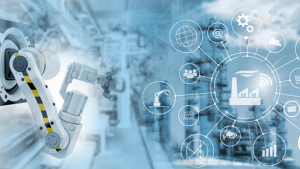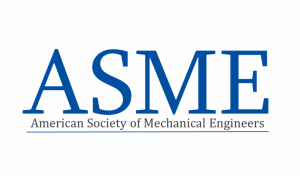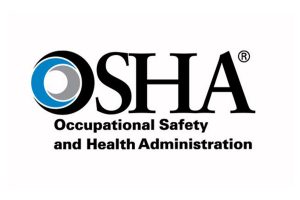 The most important resources in manufacturing are the operators and mechanics that make the production process work. Even as automation is increasing in the workplace, the human factor is essential. To keep your manufacturing running smoothly, it is essential to take care of the human resources. This means that safety of each operator and mechanic should be a foremost concern.
The most important resources in manufacturing are the operators and mechanics that make the production process work. Even as automation is increasing in the workplace, the human factor is essential. To keep your manufacturing running smoothly, it is essential to take care of the human resources. This means that safety of each operator and mechanic should be a foremost concern.
OSHA 1910 requires that employers provide a safe work place. This essentially means that all tools and facilities should be set up to ensure that the work environment is as safe as possible. In manufacturing, it is impossible to eliminate all safety risks. However, it is possible to minimize them and to mitigate unnecessary risk. Lift systems are common areas where an accident could have catastrophic results, including death and damage to property.
The American Society of Mechanical Engineers (ASME) has developed standards to address the safety of lifting  devices. ASME is a globally recognized source for standards used around the world. More than 100 countries around the world recognize the ASME standards. Probably the most notable standard is the Boiler and Pressure Vessel code first issued in 1914. Each standard is developed and refined by a dedicated group of volunteers from a cross section of experts including engineers, scientist, government officials, and others. Like the professional engineering charter, these standards were developed to protect public safety and promote best practices in industry. For lifting systems, OSHA yields to the ASME (B30.20 and BTH-1) as the applicable standard particularly for below the hook lifting devices.
devices. ASME is a globally recognized source for standards used around the world. More than 100 countries around the world recognize the ASME standards. Probably the most notable standard is the Boiler and Pressure Vessel code first issued in 1914. Each standard is developed and refined by a dedicated group of volunteers from a cross section of experts including engineers, scientist, government officials, and others. Like the professional engineering charter, these standards were developed to protect public safety and promote best practices in industry. For lifting systems, OSHA yields to the ASME (B30.20 and BTH-1) as the applicable standard particularly for below the hook lifting devices.
 Interestingly, the ASME BTH standard does not require professional engineering involvement in the development of the lifting device. The standard actually reads that the devices “shall be designed under the supervision of a qualified person.” (Reference ASME BTH-1-2017 section 1-4.1) Throughout the standard, the reader will find “qualified person” mentioned fifty-five (55) times. ASME defines qualified person as follows: “A person who, by possession of a recognized degree in an applicable field or certificate of professional standing, or who, by extensive knowledge, training, and experience, has successfully demonstrated the ability to solve or resolve problems relating to the subject matter and work.” If the employer is responsible for the applicability of any lifting device, how does the employer validate that the device is in accordance with the ASME standard, i.e “designed under the supervision of a qualified person?”
Interestingly, the ASME BTH standard does not require professional engineering involvement in the development of the lifting device. The standard actually reads that the devices “shall be designed under the supervision of a qualified person.” (Reference ASME BTH-1-2017 section 1-4.1) Throughout the standard, the reader will find “qualified person” mentioned fifty-five (55) times. ASME defines qualified person as follows: “A person who, by possession of a recognized degree in an applicable field or certificate of professional standing, or who, by extensive knowledge, training, and experience, has successfully demonstrated the ability to solve or resolve problems relating to the subject matter and work.” If the employer is responsible for the applicability of any lifting device, how does the employer validate that the device is in accordance with the ASME standard, i.e “designed under the supervision of a qualified person?”
Last month, I wrote an article titled “arrogance, confidence, and competence” where I made an argument for professional engineering involvement. By law and our professional code of ethics, a registered engineer (PE) may not practice engineering outside their area of expertise. The PE seal is proof that a qualified engineer was involved in the process. What better proof is there that a lifting device satisfies the ASME standard for a qualified person? I would venture to say there are a lot of people who self identify as being a “qualified person,” but do not understand the science behind the structural integrity of a lifting device. In my opinion, the definition of qualified person is a little too loose; particularly when considering the stakes if a lifting beam fails while carrying a heavy load.
Don’t take chances with your most valuable resources, your manufacturing work force. Don’t be fooled by incompetence masquerading as confidence or arrogance. Give yourself peace of mind by insisting on seeing proof that your lifting systems (or any manufacturing tooling) have been appropriately designed by qualified individuals backed by credentials that reflect a standard of care and competency.
 Paul V. Kumler, P.E. is president of KTM Solutions, an engineering company that services the aerospace and large scale manufacturing industries. In addition to aero structures engineering services, KTM Solutions designs and builds tooling supporting a broad clientele and various industries. The company is headquartered in Greer, South Carolina with remote offices in Charleston, South Carolina. Mr. Kumler serves in several volunteer roles including the SC Aerospace Advisory Board. Mr. Kumler, a professional engineer, is licensed in Louisiana, South Carolina, Texas and Washington. He is married to Ginger A. Kumler and has two grown children and two grand children.
Paul V. Kumler, P.E. is president of KTM Solutions, an engineering company that services the aerospace and large scale manufacturing industries. In addition to aero structures engineering services, KTM Solutions designs and builds tooling supporting a broad clientele and various industries. The company is headquartered in Greer, South Carolina with remote offices in Charleston, South Carolina. Mr. Kumler serves in several volunteer roles including the SC Aerospace Advisory Board. Mr. Kumler, a professional engineer, is licensed in Louisiana, South Carolina, Texas and Washington. He is married to Ginger A. Kumler and has two grown children and two grand children.


Be the first to comment on "Lifting Safety – Risk Reduction and Asset Protection"